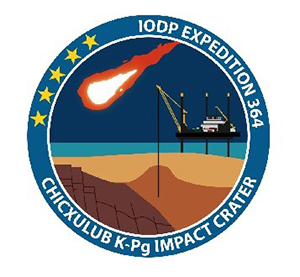News
Creatures Immediately Revived After Mass-Extinction Updated in September 2018
It has been 4.6 billion years since the earth was born. Dinosaurs, who were terrestrial kings during the Jurassic and Cretaceous periods, suddenly disappeared from the face of earth, 66 million years ago. This is a proven fact, but when described in terms of hundreds and thousands of years, it sounds surreal. When lengths of time scale up to this point, differences between 100 thousand or 1 million years seem small. How could anyone determine such details from prehistoric times?
Findings by Associate Professor Kosei Yamaguchi at Toho University and his international research team tell us that even after many organisms like Dinosaurs went extinct from an impact of a giant meteorite, living beings could have revived on earth just after 2-3 years. He says that the team could explain this amazing process for every year that went by during this period. Methods to estimate the timing of meteorite collision and methods to estimate subsequent changes in the environment are different, so it is not possible to estimate the exact time of collision by the year. But it is still amazing that events of 66 million years ago could be discussed in such accuracy today.
66 million years ago, a huge meteorite with a diameter of 10 kilometers crashed at 20 kilometers per second near the current Mexican Yucatan Peninsula. The shallow oceans in this area got heated to an unusually high temperature. It was almost like an explosion. The seafloor sediments were blown away and the Chicxulb Crater measuring a diameter of 200 kilometers was formed. The hard rocks beneath the sediments melted, but were hardened by seawater flowing into it, and sank to the bottom of the crater. Large tsunamis violently rolled rocks of all sizes in the seawater and larger rocks started to sink to the bottom.
Near the center of the collision, large amounts fine mud swam in the water, and gradually sank. According to Yamaguchi, the speed of mud piling up on seafloor in the middle of a large ocean is usually about 1 centimeter per a few thousand years. Even if the geological stratum is examined in millimeter, it can only tell us changes that occurred in a few centuries. This time however, the sediments piled up to a depth of almost 1 meter. That means that the team could closely observe changes that occurred during this short span of time.
Yamaguchi's research group used a sample from 2016 obtained by the IODP (International Ocean Discovery Program) drilling project. A pipe from an offshore facility pierced through 800 meters of strata accumulated in the Chicxulb Crater. This time, the team analyzed a portion of the columnar sample where the collision with the giant meteorite occurred.
From the analysis, the team found that an ecosystem had been restored quickly at an astonishing rate after the huge meteorite completely wiped out all signs of life. The team had focused on the 80-centimeter potion of the stratum; starting from just above the point where the rocks melted by the energy of collision, up to the point of the seafloor where sediment accumulation started. In this particular portion of the stratum which included whirling muds pushed up by seawater, there were numerous fossils of creatures swimming near the seafloor. Mud piled up repeatedly in layers over signs of life. This signifies that living beings had revived quite quickly at that time.
The question was, how long did it take for this 80-centimeter layer to pile up? According to estimation methods based on changes in species, or methods based on the rate of mud settling in water, it took about somewhere between 6 years (minimum) to 30,000 years (maximum) for the layer to accumulate. Because the paper calculated sea mud as very fine particles, the minimum figure turned out to be 6 years. However, there must have been larger particles, too. Such larger particles could have accumulated a bit faster according to Yamaguchi.
That is to say that in a world destroyed completely by a huge meteorite, life had revived in a few years, and an ecosystem had re-flourished after 30,000 years. Yamaguchi points out that “discovery of living beings which moved around the seafloor, is of utmost importance.”
Deep-sea creatures devoid of sunlight sustain themselves from nutrients produced by phytoplankton living in shallow waters. Thus, the existence of living beings in the sea means that a food chain was first created by sunlight to feed other creatures. This means that an ecosystem involving living things had also been revived. The research group believes that within 2-3 years of the collision, an organism came to life, and within 30,000 years at the most, an ecosystem had been recreated.
Until now, it was thought that the restoration of the ecosystem took about 300,000 years after the meteorite impact. Compared to that, a few years or even 30,000 years seem minimal. In this collision, 80 percent of all species are believed to have gone extinct. Even in the center of the collision, creatures revived with resilience and recreated a new ecosystem for themselves.
https://www.nature.com/articles/s41586-018-0163-6









